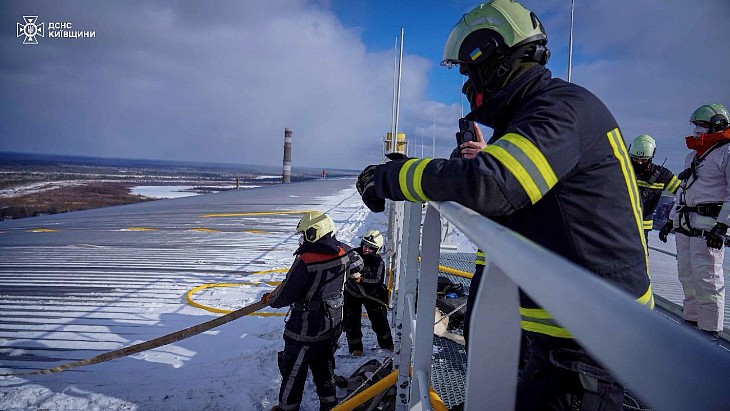Long-term safety of Forsmark reviewed by IAEA
_1.jpg)
A SALTO peer review is a comprehensive safety review addressing strategy and key elements for the safe long-term operation of nuclear power plants. SALTO missions complement IAEA Operational Safety Review Team (OSART) missions which are designed as a review of programmes and activities essential to operational safety. SALTO peer reviews can be carried out at any time during the lifetime of a nuclear power plant, although according to the IAEA the most suitable time lies within the last ten years of the plant's originally foreseen operating period. SALTO and OSART reviews are carried out at the request of the IAEA member country in which the review is to take place.
Units 1 and 2 at Forsmark entered commercial operation in 1980 and 1981 and entered long-term operation (LTO) in 2020 and 2021, respectively. Vattenfall AB, the operator, has decided to run each boiling water reactor for a total operational lifetime of 60 years. Although Swedish reactor operating licences are not time limited, consent to operate is subject to a periodic safety review submitted to the Swedish Radiation Safety Authority (SSM) every 10 years. A third unit at Forsmark began operating in 1985.
A Pre-SALTO mission in June 2012 provided recommendations for further enhancing preparations for LTO safety, including that Vattenfall: implement a comprehensive organisational strategy to ensure LTO activities are carried out; ensure an adequate process for setting the scope of LTO; and implement a comprehensive equipment qualification programme for all components important to safety.
A five-member team - comprising experts from Belgium, France, Spain and Switzerland and one IAEA staff member - has now completed a four-day mission to reviewed Forsmark's response to recommendations and suggestions made during the Pre-SALTO mission.
The team said the plant had: updated the safety analysis report to support LTO; completed the analysis of surveillance data of the reactor pressure vessel; completed the development of a proactive obsolescence management programme; and completed and implemented staffing policy, objectives and associated strategies for human resources in support of LTO.
"The team observed that the operator is preparing the units for safe LTO in a timely manner," said the team's leader, IAEA Nuclear Safety Officer Martin Marchena. "Basing their efforts on recommendations made by the Pre-SALTO team in 2019, the plant has made significant improvements in ageing management and has shown continued commitment to preparing for safe LTO. We encourage the plant management to address the remaining findings from the 2019 Pre-SALTO mission and implement all activities for safe LTO."
The team noted that further work is necessary by the plant to ensure that ageing management aspects are fully incorporated into the design and configuration management processes.
"The review has assured us that we are on the right track for safe and reliable operation in the long-term perspective," said Johan Börjesson, deputy managing director at Forsmark. "The results of the mission will help us to further develop and improve our abilities that will ensure safe and long operation at Forsmark."
The team provided a draft report to the plant management and SSM at the end of the mission. A final report will be submitted to the plant, SSM and the government within three months.










_50521.jpg)

